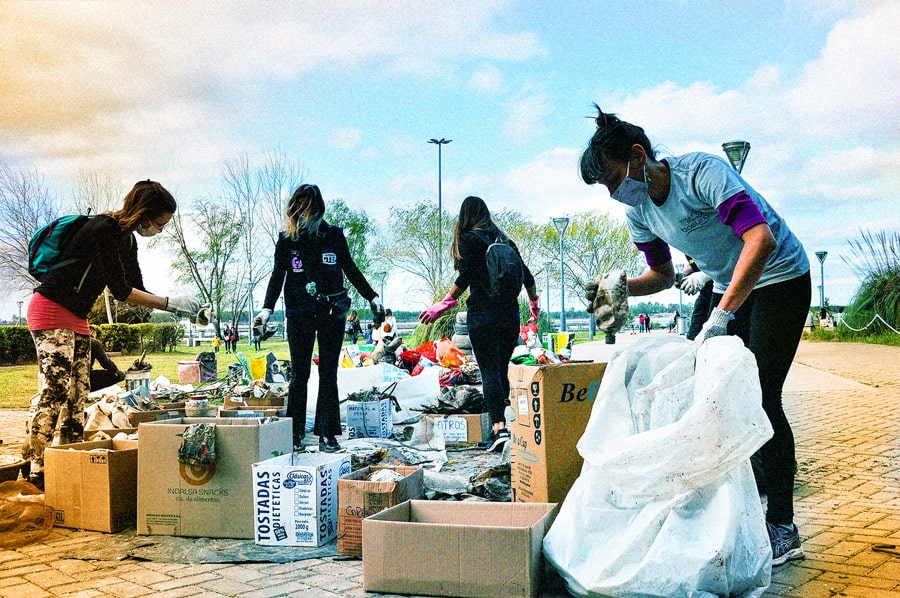No matter where you are collecting and auditing plastic waste, you will need to bring printed brand audit
data cards and visual guides (available in English and twelve other languages). We recommend printing extra copies, because sorting through garbage can get messy! Remember some pens and a hard surface to write on, such as a clipboard.
If you plan to collect waste in an outdoor location, here are a few things you should bring to protect yourself and your volunteers:
Protective gloves, tongs, and/or nets for all volunteers
Collection bins, bags, or bucket
- A large tarp or an old sheet (a place for sorting your plastic items, to avoid making a mess!)
For collecting trash out on the water in a kayak or small boat, the best way to grab waste is with a medium sized net. You can then collect it all in bags or bins affixed to your vessel, and do the auditing and counting at the end once you’re back on land
If you’re going to audit your home, school, or office, designate a separate collection bin or bag for all the plastic packaging and products you dispose of during a week, and collect them all in that bin for 7 days. Make sure to clean and dry these items before disposing of them. At the end of those 7 days, take an audit of everything in the collection bin, and record what you find on the brand audit data card.
Be sure to let your housemates, classmates, or colleagues know what you’re doing. We recommend hanging a sign above your plastic collection bin (
click here for a template!) and telling them directly. It will stop them from throwing away your collected waste before you’ve audited it, and you can also start a conversation about solutions to plastic pollution!








